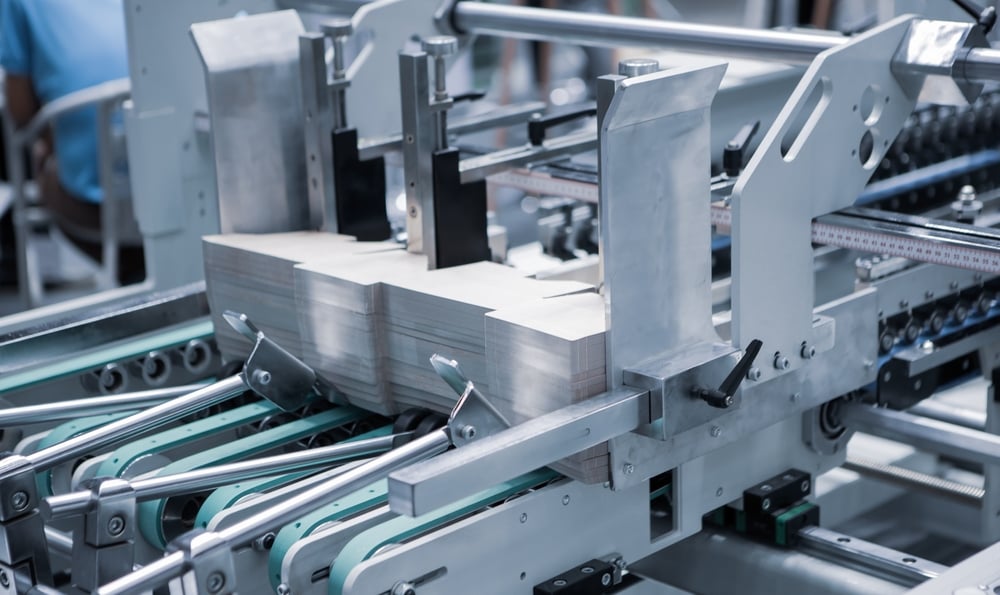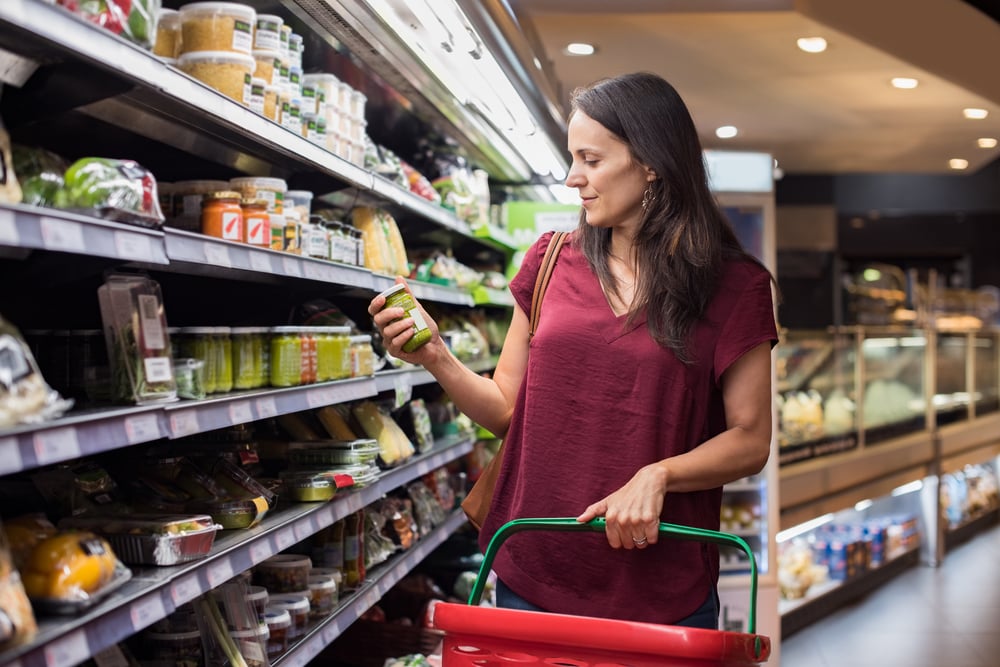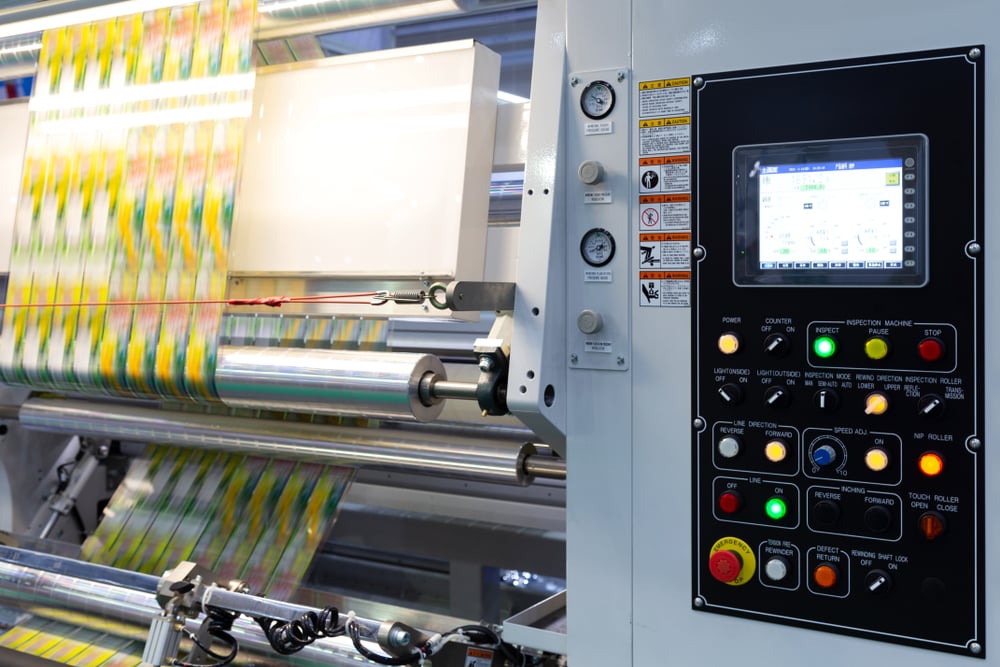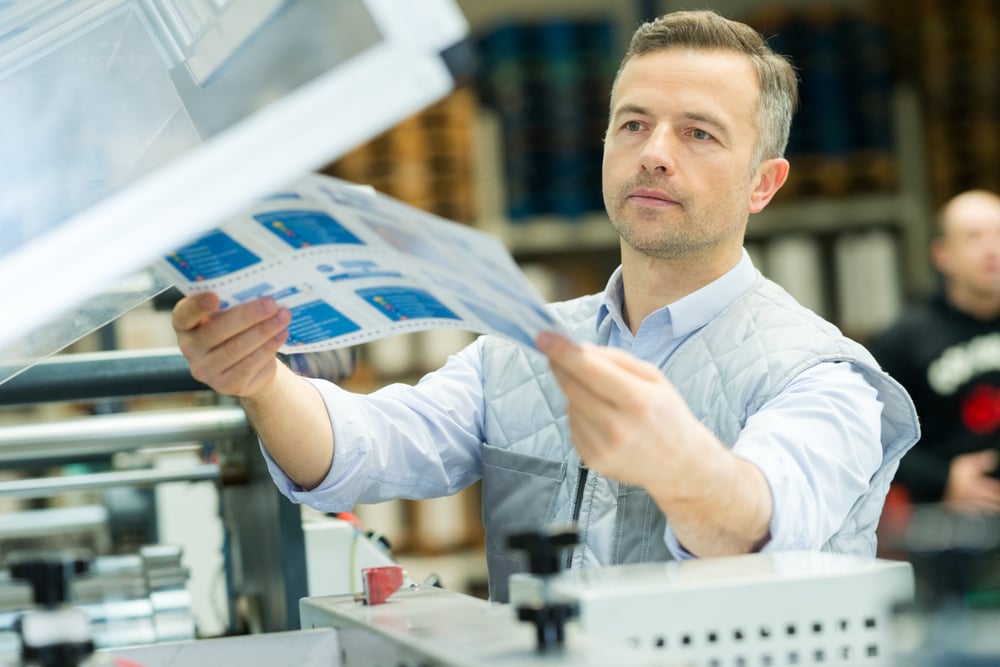12 Insightful Packaging and Printing Statistics to Know (2024)
Packaging and printing weave form and function together to convey not just products but brand identities and consumer experiences. For instance, product packaging design has become a language of its own, influencing not only visual appeal but also consumer trust and brand loyalty.
Transformative trends and innovative practices mark today’s packaging and printing landscape. Sustainability is now a linchpin of corporate responsibility, making the choice of packaging materials a strategic decision.
Meanwhile, technological innovations in printing have reshaped the visual and functional dimensions of packaging. Recent packaging statistics showcase the rapid adoption of digital printing, smart technologies, and advanced printing processes. These innovations can also contribute to sustainability goals, aligning with the overarching industry drive towards a greener future.
This article offers a comprehensive exploration of statistics defining the trajectory of packaging and printing. It will also delve into insights that unfold a narrative of industry evolution, consumer dynamics, and a future shaped by the choices people make today.
12 Key Packaging and Printing Statistics
These statistics show the current state of packaging and printing while providing insights into industry trends, consumer behavior, and sustainability.

1. The product packaging design services market has an estimated value of $24.63 billion in 2023.
The market is also expected to reach $32.42 billion by 2030, with a compound annual growth rate (CAGR) of 4%. Factors influencing this include the rising demand for sustainable packaging, increasing eCommerce sales, and growing consumer preference for visually appealing and informative packaging.
The North American market holds the largest share of packaging design services, accounting for over 35% in 2023. Market growth is driven by factors such as a well-established packaging industry, major consumer goods companies, and an emphasis on product branding and marketing. The focus on sustainability and eco-friendly packaging solutions further contributed to the demand for packaging design services.
The rapid expansion of eCommerce is also a significant driver for the global product packaging design market. Due to online shopping’s increasing popularity, there is a higher demand for packaging designs that ensure product protection, safe transportation, and enhanced unboxing experiences. Visually appealing and brand-reinforcing packaging designs are also critical, as these can create unique, memorable customer experiences and product differentiation.
2. 94% of consumers are more likely to be loyal to a brand that offers transparency, including clear and accurate product labeling.
This indicates that labeling plays a crucial role in building trust and brand loyalty among consumers and the importance of investing in high-quality label printing.

Product label honesty and transparency build consumer trust, which positively affects purchasing decisions and loyalty. In fact, 94% of consumers are more likely to be loyal to a brand offering complete transparency, as it strengthens brand image and helps buyers give real feedback. An honest and clearly messaged product label also helps consumers determine which products to purchase based on their personal needs and desires.
3. 72% of American consumers say that product packaging design influences their purchase decisions.
In a 2018 survey, 72% of American consumers stated that their purchase decisions were influenced by a product’s packaging design, while 67% said that the packaging materials did. A product’s packaging design plays a vital role in attracting consumers because it is the first thing buyers see while shopping or browsing, either online or in-store. If the retail product packaging looks attractive and compelling, buyers will likely form a positive perception of the brand.
Over time, sustainability became an increasingly important issue as consumer awareness grew. In 2020, McKinsey reported that 55% of US consumers were extremely or very concerned about the environmental impact of product packaging.
During the COVID-19 pandemic, consumers placed more value on food safety and hygiene. This resulted in a new normal in packaging, with packaging suppliers having to rethink materials and design requirements accordingly. Meanwhile, consumers saw sustainability as being more important as people began to emerge from the pandemic. In Europe and Japan, marine litter was top of mind, while pollution was of more concern in the Americas and other Asian countries.
4. 60% of sustainability commitments emphasize full packaging recyclability and a higher degree of recycled content.
Post-pandemic, consumers still prioritized hygiene, food safety, and shelf life as the most important aspects of product packaging. However, sustainability pressure continued to grow in 2023. Producers and retailers of fast-moving consumer goods (FMCGs) persist in developing innovative packaging designs to enhance circularity, focusing on incorporating recycled content such as post-consumer resin (PCR).
These advancements are driven by a desire to fulfill their sustainability commitments, respond to consumer demands, heed the voices of non-governmental organizations, and comply with evolving packaging regulations.
The sustainability commitments of global corporations mainly focus on packaging recyclability and recycled content, a reduction in total usage of plastics (26%), and the promotion of change and innovation in the use of packaging (14%). This aligns with growing consumer consciousness, prompting businesses to reevaluate their packaging material choices and opt for alternatives that are both functional and environmentally responsible.
5. Approximately 50% of US consumers are willing to pay more for sustainable packaging.
With consumers becoming more aware of the adverse effects of unsustainable packaging, the demand for eco-friendly options is increasing. In developing economies such as China, Brazil, and India, consumers are concerned about both air and water pollution. Ocean litter is top of mind for most consumers in Europe, Japan, and the United States.
Consequently, consumers across these regions claim to be willing to pay more for sustainable packaging. In particular, US consumers are prepared to pay a premium for sustainable packaging across different end-use areas due to their commitment to sustainability.
6. Globally, 69% of consumers see compostable and plant-based packaging as the most sustainable.
The positive and negative perceptions of various packaging types vary according to sustainability, application, and region. Thus, no single packaging type (i.e. plastic, glass, metal, or paper) is absolutely preferred across every attribute of packaging sustainability. However, the world may not be fully aligned about what the most sustainable packaging materials might be.
Compostable and plant-based packaging rank high in several countries, including the US, as well as plastic films that consist of renewable or compostable materials. Meanwhile, Japanese consumers find fully recyclable plastics or plastics made from recycled content to be equally sustainable as compostable packaging. Countries such as India and the UK also find paper packaging highly sustainable.
7. Consumer preference has led to 2.7x faster growth for sustainable products versus traditional goods.
Since consumers now value sustainably sourced and manufactured products, this has led to 2.7 times faster growth for sustainable products compared to traditional goods, despite the former’s price premiums. Furthermore, policymakers and regulatory bodies are implementing regulations related to single-use packaging and extended producer responsibility (EPR) to respond to public sentiment.
Europe is currently the frontrunner with regard to these regulations. However, governments in North America and the Asia–Pacific are also developing similar legislation. These packaging trends in consumer preferences and regulations emphasize product packaging as a key focus for sustainability efforts.
8. In 2022, the global biodegradable paper and plastic packaging market was valued at $14.5 billion and is expected to reach $23.4 billion by 2030.
There has been increasing adoption of biodegradable packaging materials, with the global biodegradable paper and plastic packaging market predicted to grow at a CAGR of 9.6% in 2023 to 2030. Starch-based plastics, in particular, have substantial market potential as companies continue to incorporate them in their packaging.
Moreover, ongoing research and development on bioplastics can lead to innovations improving the performance and cost-effectiveness of starch-based plastics. Consequently, these materials can potentially become more competitive in the packaging industry and offer a promising alternative to traditional plastics.
The mushroom packaging market is also anticipated to expand. In 2022, it was valued at $74.57 million and is projected to reach $203.25 million by 2029. Mushroom packaging has shown promising results in terms of durability and compostability. Thus, the versatility of mycelium-based packaging materials has been gaining traction in industries striving for more sustainable solutions. Handling and packaging are the main driving factors of this growth, as well as consumers’ preference for more innovative packaging.
9. Digital label printing market demand is anticipated to be valued at $11.06 billion in 2023 and is expected to grow at a CAGR of 5.3% by 2033.
The global digital label printing market demand is estimated to reach $18.54 billion from 2023 to 2033. This is driven by the need for labels with tampering and counterfeiting protection, cost-effectiveness, less labor requirement, and reduced waste production. These have also made digital label printing more common in sectors such as food & beverages, cosmetics, and pharmaceuticals.

10. Pressure-sensitive labels account for over 75% of the global labels market in 2023.
The pressure-sensitive labels segment share is anticipated to be 75% by the end of 2023. In the US, it accounts for over 80% of the total label market. PS labels are convenient, eco-friendly, fully customizable, and compatible with high-definition printing.
The wide application of PS tapes and labels in end-user applications such as construction, food and beverages, electronics, healthcare, and general manufacturing has contributed to product sales. The surge in eCommerce, particularly online deliveries of consumer goods and household appliances in flexible packages and corrugated boxes, helped facilitate the demand. Meanwhile, demand for rigid and flexible packaging has also pushed PS tapes and labels market growth.
11. The 3D-printed packaging market is set to reach $2,560 million by 2033.

As 3D printing technology progresses, value chains are evolving to cater to the expanding and varied demands of rapidly changing markets. In particular, the 3D-printed packaging market has grown significantly in recent years. In 2023, the 3D Printed packaging market size is projected to be valued at $1,210 million.
This growth has been driven by the rising demand for custom packaging solutions and advancements in printing technology. Additionally, 3D printing technology enables the manufacturing of eco-friendly packaging materials. Materials expected to be utilized in the printing process include biodegradable plastics, nanomaterials, and conductive materials. This is relevant to businesses and consumers, given the growing demand for sustainable packaging solutions.
Hybrid printing methods combining 3D printing with traditional printing techniques, such as offset printing, are also predicted to gain traction. This enables more customized packaging solutions with intricate designs, colors, and textures.
12. The active, smart, and intelligent packaging market is currently valued at $29.76 billion.
Overall, the smart packaging market is valued at an estimated $24.6 billion in 2023. The active, smart, and intelligent packaging market, in particular, is estimated to expand at a CAGR of 9.8% from 2023 to 2033.
Smart packaging combines science, technology, and specialized materials to improve conventional packaging’s functions by including active and intelligent packaging. Companies across industries recognize the potential of smart packaging in enhancing product safety, traceability, and consumer engagement.
Advancements in printing technologies are significant smart packaging market drivers. Printed technologies are effective in the processing and presentation of data on paper and other surfaces. This has resulted in a substantial amount of scientific research on printed electronics and RFID technology, which are foundations for the creation of future smart packaging applications.
Technologies such as QR codes and sensors have also become increasingly prevalent. This has lead to improved inventory management and enhanced visibility within the supply chain.
Factors such as Internet of Things (IoT) technology integration into packaging, incorporation of augmented reality (AR) and virtual reality (VR), increased consumer expectations for product transparency, and demand for secure and effective packaging solutions in eCommerce can also be attributed to the smart packaging industry’s anticipated growth.
Navigating the Future Through Ink and Innovation
Packaging and printing play essential roles in business, combining both creativity and practicality. Key packaging industry statistics show that significant changes are on the horizon. Sustainable materials are reshaping environmental practices, and advanced printing technologies are transforming how we visually communicate. Industries aren’t just observing change; they actively contribute to shaping a future where innovation meets responsibility.
The statistics provide a clear snapshot of where consumer choices, technological progress, and sustainability demands intersect. Businesses must not only adapt but also proactively engage with this evolving landscape.
Those ready to navigate this transformative journey need a reliable, sustainable packaging manufacturer. Talk to Meyers experts to explore collaboration opportunities in navigating this future and discover packaging excellence in an era defined by innovation. Let’s pave a path where every package isn’t just a container but a testament to the boundless possibilities that lie ahead.

